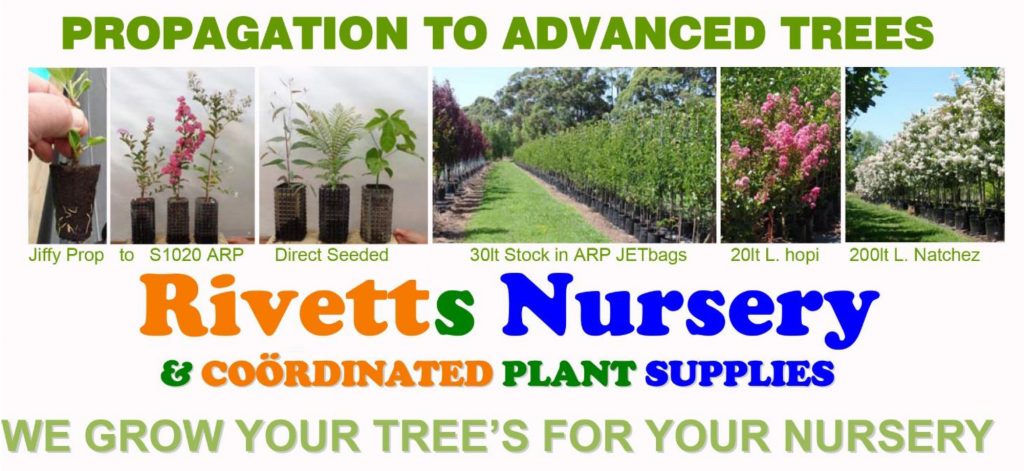
Rivetts Nursery has gone through many manifestations since first established in 1969 on Dandenong Murrumbeena on the Outer Circle Railway line.
Of interest is that the picture to the right of the Lemon Scented Gum was planted in front of the Nursery in the display garden bed. This is now one of the best specimens in Melbourne. As a matter of public record this tree was planted in July 1969 from a 6” pot supplied by Bernard Schubert of Schubert’s Nursery of Nobel Park.
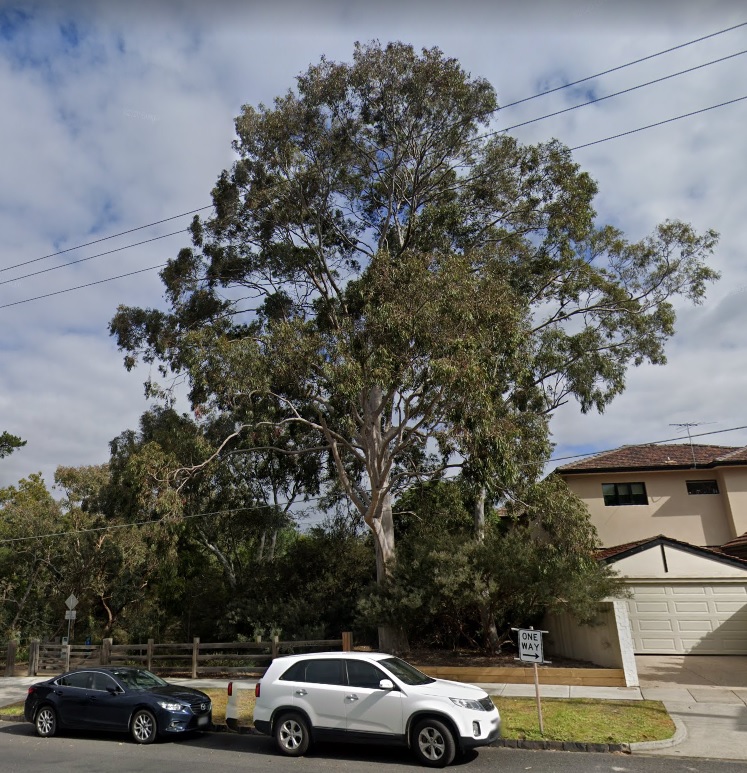
From this site the Nursery moved to Railway land in glen Iris. The site was the lower unused half of the site of Smith and Gordons Nursery. Here the nursery was largely set up by just graduated Burnley Student Peter Wilkins. Peter eventually started his own nursery TGA one of Victoria’s Leading Nurseries. 1980 we started Coordinated Plant Supplies providing a one stop shop for Contractors and Councils to meet their Tree and Plant needs.
With the purchase of the old Chadstone Tip site Land in Marriot Street Oakleigh this saw the consolidation of the Nursery with the Arborist and Landscape Business all on the one site. The site was sold and the Nursery Moved to Tooradin until in 2003 it moved to a greenfield site at Glen Forbes.
The picture to the right, taken April 2004 is of the bottom dam where the whole nursery drains back to after passing various filter beds. With Nursery Area 1 on the right and Area 2 conifers and the new ground behind.
September 2005 saw the Deciduous planting and establishment of Nursery 3 area. This has since been significantly developed with various iterations of trellis systems. This area of the Nursery is exposed to the South Westerly prevailing winds, their strength has seen many an hour spent standing trees back up.
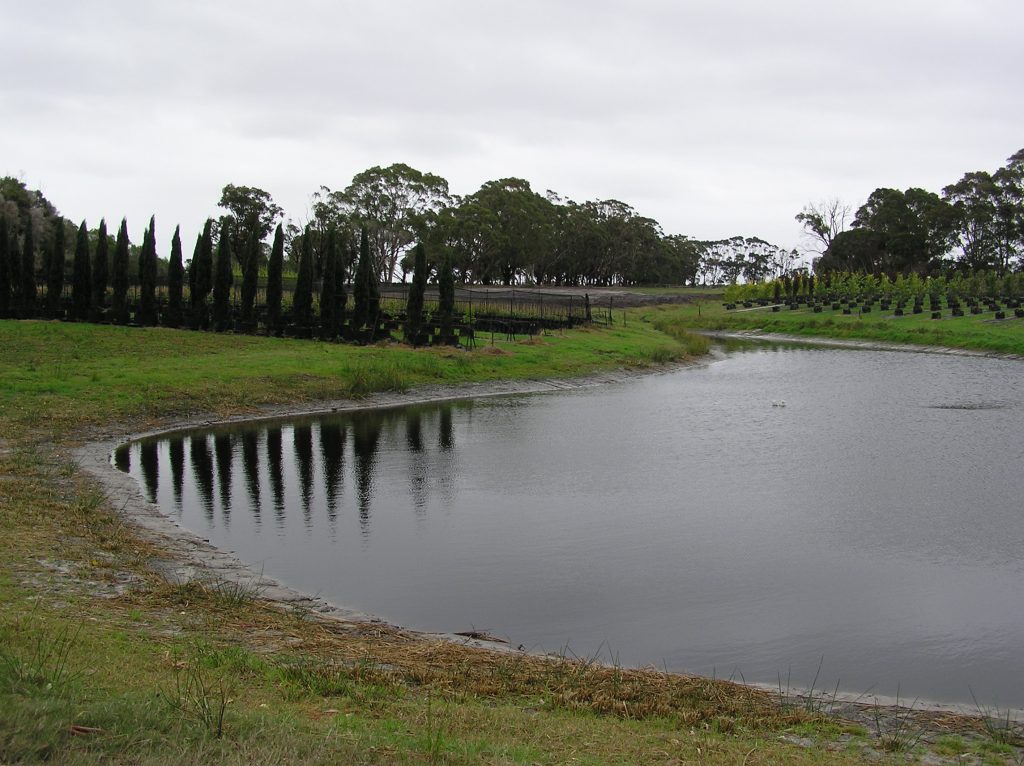
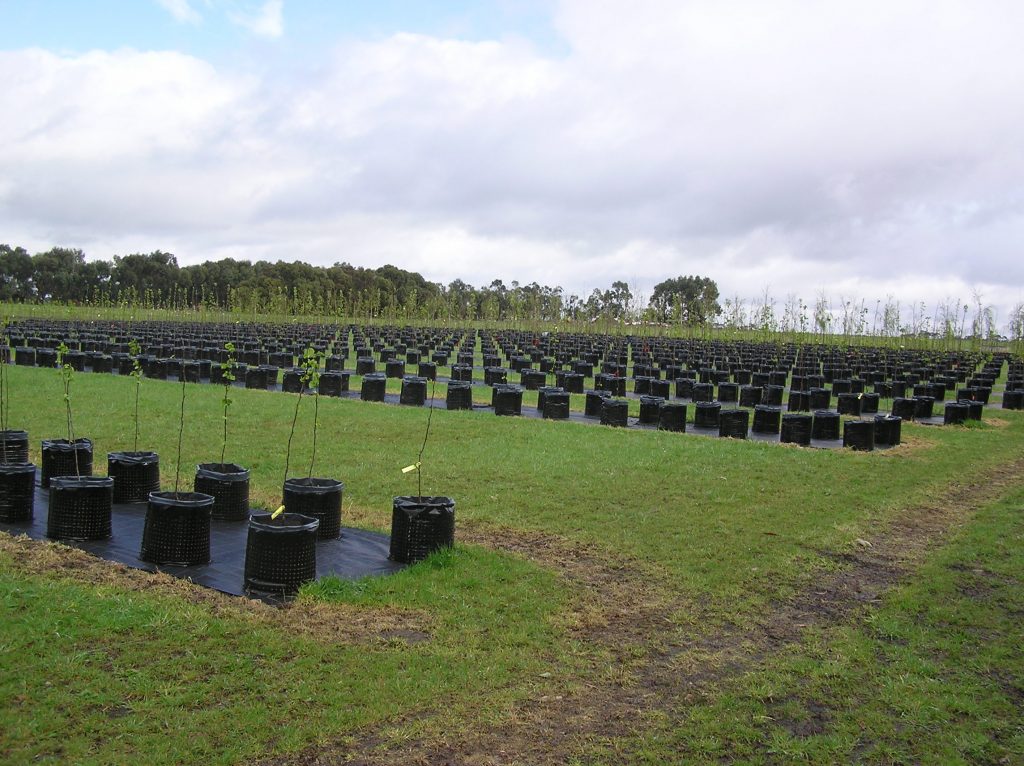
March 2007 came with the transition from River Water to Bore. The drought had stopped the river running at required levels and we were a day away from spending $10,000 a week buying and bringing in water tankers when the bore came into service.
I employed a very nice man who had been a Water Diviner, all his life (now Dowser) he identified a number of sites, the most suitable next to the drive and power line was selected.
The rig arrived and progressed quite fast until Basalt Rock was found at 35 m and ended at 48 m then easy boring to 60m. Proving the bore with Air Lifting saved our bacon, filling the bottom dam, until the bore could be full lined and completed. A lot of thirsty plants were very happy with a long drink.
Setting up larger propagation facilities our first polyhouse blew flat after just 4 years. We added our new pollyhouse with new flood and drain beds, the central bed having bottom heat. In the three rows there is three separate flood and drain beds in each. Each bed also has an overhead mist system for seed germination.
Inside the Polyhouse we can hold up to 4,020 S1020 production pots and in the outside Flood and Drain Beds a further 7,100 S1020 can be accommodated in in 43 separately controlled Flood and Drain Beds. Once the plants reach an appropriate size and root colonisation, they are mover down to the lower Flood and Drain Bed area where we can hold up to 10,500.
As a Horticulturalist have always been fanatical about the production of “Natural Root Systems” whereby root faults that inevitably lead to the poor performance or early structural failure of trees. My experiments at my first nursery “Danbena Nursery” showed me how black polypropylene bags with numerous holes punched in the sides and bottom in combination with fine organics potting mix, that provided massive surface area per cubic centimetre of mix could produce a fabulous root system and larger crown to root ration.
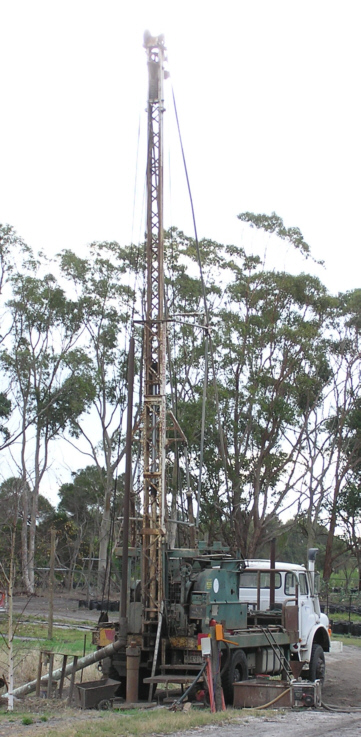
The mix was composed on a product called “Compeat” a Western Australian sedge peat that arrived in Wool Bales. To this we added rice hulls and deep litter chicken manure with additions of Gypsum, Limes and the fertiliser of the day 1:1:1 and a trace pack. I had the bags especially blown to my sizes and thicknesses by Abraham Plastic of Cheltenham Vic. This was a unique product in 1969 when Terracotta Pts, Jam and Kerosene Tins were the Nursery container of choice. Potting mixes comprised soil, of various types, some sand and for the skilled propagator an additive called “Leaf Mould”. Pine Bark was for decades later.
Today we have high specified mixes as supplied by John Spotswood, in conjunction with Air Root Pruning S1020 Rocket pots and my 1969 JETbag and JETwrap produce trees with “Natural Root Systems. See under production and videos the process we use for the best possible trees and root systems. Remember “Roots are the brains of any plant”.
